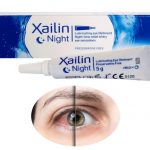Annovera Ring: Uses, How to use, Side Effects, Reviews

Sexually active couples who do not use any method of contraception have approximately an 85% chance of experiencing a pregnancy over the course of a year. The average number of children U.S. adults think is ideal is 2.7.3 To achieve this family size, a sexually active woman must use contraceptives for roughly three decades.
What is Annovera?
Annovera is a contraceptive vaginal ring that provides medication for a full year. It has two ingredients: ethinyl estradiol and segesterone acetate. Ethinyl estradiol is a form of estrogen, and segesterone acetate is a progestin (a type of progesterone). These are the two main sex hormones that regulate the menstrual cycle. The FDA approved Annovera birth control ring in 2018.
When birth control includes both estrogen and progestin, it’s called a combined hormonal contraceptive. The two hormones work together to stop your body from releasing an egg (ovulation). A pregnancy can’t happen unless an egg has been released. Stopping ovulation is the main way Annovera works to prevent pregnancy.
Combined hormonal contraceptives can also thin the lining of your uterus and thicken the mucus around your cervix. These actions help prevent pregnancy as well. A thin uterine lining can prevent a fertilized egg from implanting. Thicker mucus makes it harder for sperm to swim into your uterus.
Who should not use Annovera?
Doctors say that you shouldn’t use Annovera if any of the following applies to you:
• Uncontrolled high blood pressure
• Heart problems
• Diabetes
• Increased risk of blood clots
• Undiagnosed abnormal uterine bleeding
• Potential hepatitis C drug combinations containing ombitasvir, paritaprevir, or ritonavir (with or without dasabuvir)
• Migraine headaches with aura
• Liver disease or liver tumors
• A history of estrogen- or progestin-sensitive cancer (like breast cancer)
• Women who are breastfeeding
The FDA mentions one limitation in using Annovera: It hasn’t been studied sufficiently in women with a BMI of 29.
How does Annovera feel?
Researchers wanted to find out how satisfied women were with Annovera and if they chose to continue with it. They found that women who felt the ring when they wore it had twice the odds of being dissatisfied.
Here’s the thing, though: The authors of the study mentioned above say that when you place Annovera in the upper two-thirds of the vagina, you shouldn’t be able to feel the ring sensation because of the type of tissue that’s up there. Most women who participated in the study (71%) said they never felt Annovera during sex (though half of the women who were dissatisfied with it said they sometimes or always felt it).
How should I use Annovera?
Annovera should be inserted into your vagina and left in for 21 days in a row. After 21 days, remove the ring for 7 days. This will allow your body to have a period.
When you first start Annovera, it may take a few days to fully kick in. This depends on if your periods are regular and if you were previously using a different form of birth control. In some cases, you may not be fully protected for a week after inserting Annovera for the very first time. Double-check with your healthcare provider on when protection will kick in for you.
To insert and remove Annovera, follow these steps:
- Wash your hands with soap and water. Dry your hands.
- Wash the Annovera ring with a mild soap and water. Use a clean towel to pat it dry.
- Choose an insertion position that feels comfortable to you. You can lie down, stand, or squat to insert the ring. If you usually use tampons, it may be helpful to try the same position you use to insert a tampon.
- Hold Annovera between your thumb and pointer finger. Gently squeeze the ring while inserting it into your vagina.
- Push the ring as far as you can into your vagina. You shouldn’t be able to feel it after inserting it. If you can feel Annovera, you should reposition it.
When it’s time to remove Annovera, wash your hands. Use your pointer finger to reach inside your vagina. Hook your finger through the ring and pull it out.
After you remove Annovera, clean it with mild soap and warm water. Pat the ring dry with a clean towel and place it in its original case. At the end of your ring-free 7 days, clean Annovera again right before inserting it into your vagina. Proper cleaning is important and will help lower the risk of infections.
How long does Annovera last?
Annovera can be used for 13 menstrual cycles (about a year). It may be helpful to keep track of how many times you’ve used your ring so far. That way, you know when it’s time to replace it. Using Annovera after 13 cycles may lead to unplanned pregnancies.
Consult a healthcare provider to determine whether Annovera is safe for you. Like the pill, you shouldn’t use Annovera if you smoke and are older than 35.
What are the side effects of Annovera?
Researchers across the globe looked at Annovera safety data from 9 studies of over 3,000 women. They found that Annovera is just as safe as other hormonal contraceptives like birth control pills.
Common side effects of Annovera
Because it contains the same kind of hormones as the pill, Annovera usually has similar side effects. Here are some less serious side effects that some women may experience with Annovera (though, like side effects of birth control pills, they are usually mild and often disappear after you use them continuously):
• Breast tenderness
• Headache
• Nausea
• Vaginal discharge
• Dysmenorrhea (painful menstrual periods)
• Abdominal pain
• Irregular bleeding
• Mood changes
Women who participated in safety research trials of Annovera said that headache and nausea were two of the most common side effects. Researchers did find side effects unique to the vaginal ring, which were different from the patch or pill: Ring users had more vaginal irritation and discharge than pill users, but less acne, nausea, and emotional changes.
You might want to know how many women experience side effects. Annovera safety trials found that they happened with at least 5% of women.
Rare side effects of Annovera
Like with the pill, Annovera does carry some serious risks. The FDA says that hormonal birth control can have rare but severe side effects like:
• Heart attack
• Blood clots
• Stroke
• High blood pressure
• Toxic shock syndrome (according to the Annovera manufacturer)
What are the pros and cons of using Annovera?
Using the Annovera birth control ring has several advantages, but it’s not for everyone. Try reflecting on your comfort level when deciding on the pros and cons of Annovera.
Benefits of Annovera
Researchers and women’s health advocates call Annovera a global step forward because of some of its biggest advantages are:
• Annovera is woman-controlled because you can insert it and remove it yourself, unlike the IUD.
• It’s pretty easy to use and store (it doesn’t need refrigeration).
• It’s easy to clean; according to the manufacturer, you’d just use mild soap and lukewarm water.
• The innovative silicone ring delivers hormones to your body at a steady rate, allowing for continuous, lower doses of hormones than the pill.
• Annovera is reusable and lasts for 13 menstrual cycles (1 year).
• You wouldn’t have to get another ring for 1 whole year; what a big contrast to having to go to the pharmacy every few months (or every month!) to get a refill for the pill.
If it’s the right fit, you can even get Annovera prescribed online by our medical team and sent to your door for free.
Potential disadvantages of Annovera
The Annovera birth control ring may not work for everyone, and that’s okay. Here are some potential cons to think about:
• Annovera can fall out of the vagina (this happened at least once for 25% of women in a large-scale safety study of Annovera). You’d need to wash it with mild soap and reinsert it within 2 hours.
• It may cause more vaginal irritation and discharge than the pill.
• Annovera has common side effects like headache, nausea, and breast tenderness or more severe side effects like cardiovascular events, similar to other hormonal birth control methods.
• You’d still need to remember to take out Annovera after 3 weeks of keeping it in place, and then reinsert it after 1 week.*
• You’ll have to be comfortable enough with your body and genital area to insert and remove the ring from the vagina.
• If you’re paying cash (in the event it is not covered by your health insurance), Annovera is more expensive than regular birth control pills.
*Tip: You can use the Annovera Birth Control Tracker app App Store for iPhone or on Google Play to help remind you when to insert, remove, and reinsert your ring.
Talk to your doctor about the pros and cons of Annovera. Our medical team can help you decide if Annovera or another form of birth control is right for you.
How to buy Annovera
You need a prescription to get Annovera, just like you would with any other hormonal birth control. From there, you can go and get the prescription filled at a pharmacy.
See if you’re eligible to get Annovera prescribed online by our medical team and delivered to your door for free.
The good news is if you’d rather not have to go in person to get a prescription, you may be able to get the Annovera birth control ring prescribed online and delivered to your door. Here’s some more information about getting Annovera from us, The Pill Club, a telemedicine provider.
Suppose you don’t have a regular primary care practitioner or gynecologist—not to worry. You can also go to a health clinic like a student health center or Planned Parenthood to get a prescription for Annovera.
Annovera is on the expensive side without health insurance. However, if your health insurance covers Annovera, you may be able to get it free of cost.
If you want to check how much your insurance will cover, see how much you’ll pay for Annovera by filling out some information, including the name of your doctor and health insurance information. The Annovera manufacturer says that if the ring isn’t free with your insurance, you can download their savings card to get it for as low as $0.
Annovera FAQ
What do I do if Annovera falls out?
It’s possible for Annovera to accidentally come out of your vagina. This could happen during sex or even while using the bathroom if you’re straining.
If your Annovera ring falls out, wash and dry it as described above and place it back in the vagina. If it’s been out of you for less than 2 hours total during the 21 days you have your ring in, you’re still protected against pregnancy.
If Annovera has been out of you for more than 2 hours, you should use a backup method of protection (e.g., condoms) to prevent pregnancy. Continue using backup protection until Annovera has been reinserted for 7 days in a row.
Is Annovera effective as a birth control method?
Yes. When used according to the manufacturer’s instructions, Annovera is about 97% effective. This means that only 3 out of every 100 women get pregnant while using it. Its effectiveness is similar to the pill when it’s used perfectly (meaning you take every pill at the same time every single day).
It’s important to note that Annovera doesn’t protect you from sexually transmitted infections (STIs), including HIV. Use barrier contraceptives, like male or female condoms, to protect yourself.
How much does Annovera cost?
As part of the Affordable Care Act (ACA), many commercial plans must fully cover birth control. Vaginal contraceptive rings are included under this law. So it’s possible Annovera may cost $0 with your insurance.
Annovera Vs Nuvaring Find more information Here





